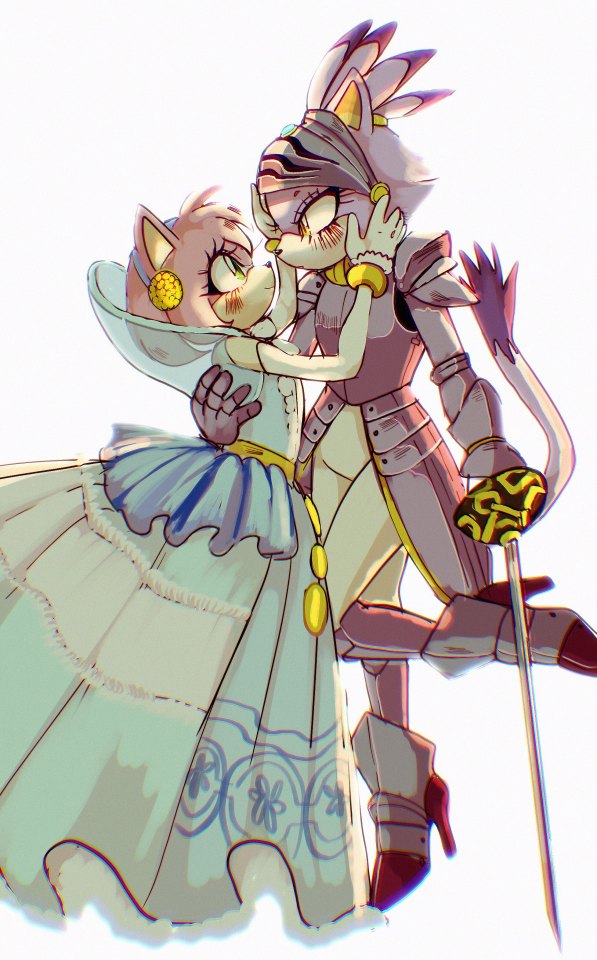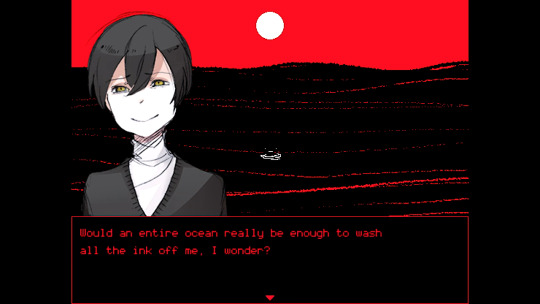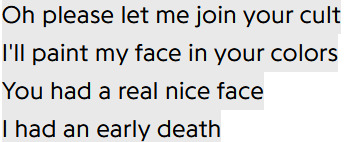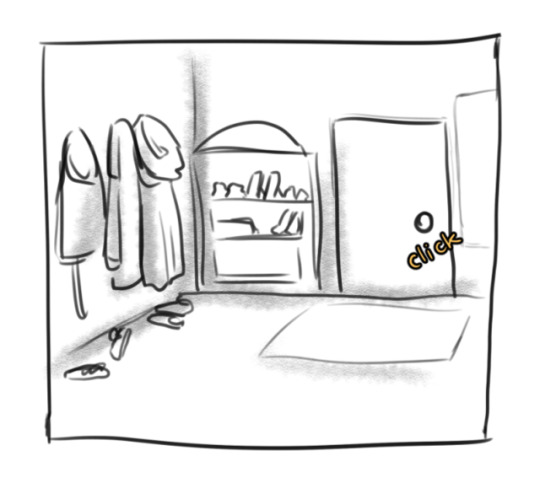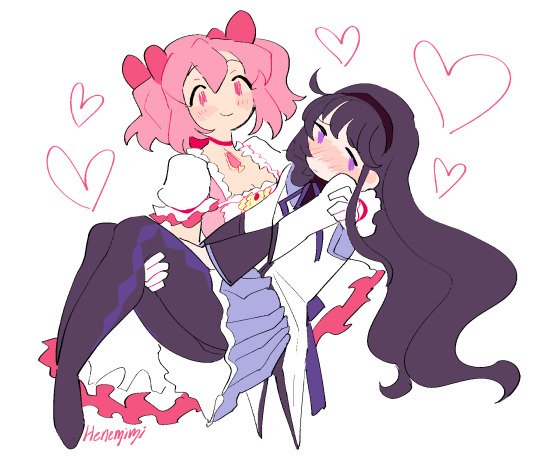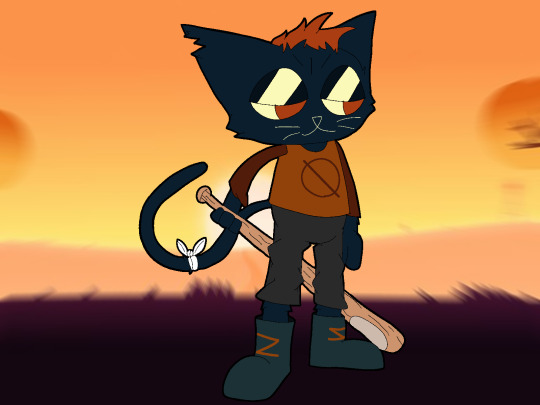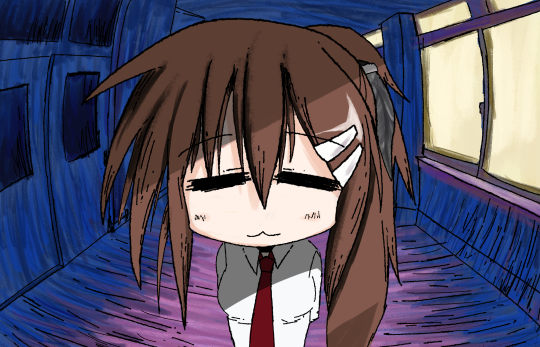hiiii :3 I like media analysis and art in general! dylanakamura.carrd.co
Don't wanna be here? Send us removal request.
Text
Super Cub: A Brief Review
Back in 2021 when I was in the heat of binging a million seasonal anime, I found Super Cub. I would give tons of shows a few episodes before deciding to watch more, and Super Cub really stood out. It wasn’t anything flashy but the mood was so heavy and quiet at first. We follow Koguma living life all on her own, keeping herself afloat. She’s quiet and doesn’t do much besides the necessities. As she bikes to school she gets bombarded with the realization a regular bicycle isn’t gonna cut it anymore, and she works to get herself a motorbike of her very own.
Through her motorbike, the titular Honda Super Cub, the world around Koguma begins to shine in a way she never thought was possible. She meets other girls with a keen interest in motorbikes and finds kindness in unlikely places. The beauty of this show is in how something so mundane from the outside can be truly life changing in the eye of the beholder. I won’t lie I was super fixated on this show as it aired, more than any of the heavy hitters that entire year. Getting to watch Koguma grow and change into the person she wants to be by her own hands without even realizing it is so beautiful, like watching a flower bloom so brightly. It brought me a sense of comfort in turbulent times and a stability I still work towards in my own every day. It really is the definition of a comfort show. This show is a testament to how you heal by continuing to go out and experience life; by going out and living rather than locking yourself up in your room or your basic routines. You can find passion in anything and work what you learn from that into the rest of your life, and that’s such a beautiful thing to me.
Would Recommend if you like:
Aria
YKK
GLT
Iyashikei as a genre (include definition)
Iyashikei (癒し系) is a Japanese word that means "healing". It is a sub-genre of Japanese anime and manga that are intended to have a calming or healing effect on the audience.
4 notes
·
View notes
Text
La La Land - Epilogue and Art
Obvious Spoiler Warnings for the ending of La La Land and many components leading up to it. I implore you to go watch this masterpiece as soon as you can!! Now onto the post!
The Epilogue to La La Land is one of my favorite scenes ever. Besides the context of my watch, it just culminated in such a beautiful feeling throughout my whole mind and body watching the whole 10 minutes play out. And the most outstanding part is how the scene has no dialogue, no lyrics, just music, and vision to carry to us a feeling you can’t really put into words.
To set the stage I want to share the context leading up to the ending very briefly through my own lens. We had just followed Mia and Sebastion through a rollercoaster of emotions leading both on the path to their respective life goals and were left on a cliffhanger, a will they/won’t they fork in the path when it cuts to 5 years later. We get so teased by the environments and parallels to the beginning of the movie and hints that they both have succeeded but no confirmation of the real meat and potatoes. Are they still together after all this time? Then we finally see that Mia is married to a rich man in a mansion with a baby at home. Him and her leave their child with a babysitter for a fancy dinner out. While they’re out they hear the murmur of a jazz band from inside a club, and they both heed the call and go in. You could cut the pure tension and anticipation with a knife at this very moment. What’s it called? Is it Seb’s? We see the familiar logo in neon light but the band doesn’t show anyone familiar until the song ends and he walks up on stage. Their eyes meet.
This moment is when a candle long forgotten begins to burn once more, and we get to accompany them both on the ride down memory lane, a memory lane that never was. Kicked off with the very tune that brought the two together, we see an idealized revision of their first meeting, many scenes from the movie shown in caricature with little to no friction between Mia and Sebastion. We even see them move into a nice home together and share smiles. We get to see how things could have looked if they stuck together when Mia got her role out of the country. Not a single moment shared with us is without a smile on their two faces. They even find themselves dancing among these boisterous sets and even the stars themselves. This whole time we get these familiar reprisals of the film's entire score, not one to one but with just enough familiarity to each melody that we recognize we’ve heard this before, we’ve felt this before.
Through a filter like an old family camera we see the two watching themselves raising a child together, their child. This scene really kills me every time because it hones in on that feeling we all get looking at childhood pictures and videos, that layer of the past that we breathe in that teleports us back to that time. It’s such a special scene, and the cherry on top is a reprisal of City of Stars accompanying this montage. The final moment being of Mia and Sebastion prancing among beautiful flowers and sharing a tender embrace behind a bush, before it fades to a very familiar scene, this time it’s Mia and Sebastian leaving the baby with a sitter to have a nice dinner. They take the same exit and run into the same club playing jazz, where Mia sits in that same seat embracing the man next to her and listening to her and Sebastion’s song being played to them once. The circle completes.
The song ends and they part ways once again, but before leaving they look at each other one last time, each with a smile on their faces.
What I really Love about this ending is the feeling that we got to experience a Life that never was totally composed of a Love they both shared for each other. And the feeling that regardless of which path they would have gone down they would have ended up there, that same night together, feeling that same way, content with their lives and happy for the time they got the privilege to share with one another. It’s art at its core that I think this scene captures so well. We read a book or watch a movie to view from a window a life not lived in the way we live our own lives, but still a story that we resonate with in a very real way, just like the way the epilogue of La La Land acts for Mia and Sebastion. None of what happened in those 10 minutes were real per se, but the feelings behind them were authentic, just like Mia and Sebastion’s real lives aren’t real in our world, but the feelings of those characters are authentic as well. Love is such a powerful force and this movie paints a beautiful picture with that feeling and sensation we all know and feel.
I really thought the ending to this movie was a sad one when I initially finished it. The pair I was rooting for didn’t end up together. That’s so frustrating!! But as time has passed since watching the movie, I’ve begun to realize how hopeful the ending really is. It’s supremely hopeful to know that even coming out the other side of a hard life-altering decision, you’ll be okay. You’ll be exactly where you need to be. And that Love you felt, that passion for someone or something that embodied your whole being isn’t just gone. It will always be around in our memories and our creations. That’s such a truly beautiful thing to me that I’ll never forget because of this movie.
3 notes
·
View notes
Text
Joe Pera Takes You To The Grocery Store
Breakdown
This isn’t a super in depth thematic analysis, just a breakdown of an episode I really like of Joe Pera and the details I think make it so great.
Opening/establishing shot 0-0:53
We get this small look into Joe’s neighborhood grocery store, a remarkably mundane store, nothing glamorous, but the music and direction brings the store to life. Not the brimming kind of life you get in a Disney film but a very real yet bright kind of life.
Joe’s introduction 0:53-1:44
Joe, like in most areas of life, has a well thought out philosophy on grocery shopping. It’s an “immersive theater experience” where we all play our parts as shoppers. It engages the senses in a familiar and comforting way that’s filled with all the same variables and goals but never plays out the same way twice. The role is fun yet challenging, something you could say about any walk of life.
Tackling the infinite options 1:44-4:03
The number of items in your average grocery store is unthinkably high and only keeps growing exponentially. That’s a lot to take in, so Joe has rules put in place to keep him in line. He has his three Yes’s, Should he eat this, Will he eat this, and Can he afford it, to keep himself within his budget of $70, which he writes out in a check to keep himself in check. You can think of these rules as part of his role as a shopper on top of giving Joe the necessary calories to fill his roles in the rest of his life. He draws the line himself to keep himself from “ruin” as he puts it.
Melskys 4:03-6:11
This section mostly focuses on Joe playing the role of a responsible neighbor and teacher to Sue and Nicole Melsky respectively, making small talk and inevitably listening to their issues, mainly Mike and his new Chicken diet which has been only causing issues. Joe tries to make the best of it for Sue but ends up just apologizing for Mike’s absurdity.
Samples 6:11-8:24
His next exchange is with Fred the sample guy, who’s job is to obviously sell samples. He convinces Joe to buy his Honey Ham, but Joe is always prepared with a $5 fun budget for purchases like this, keeping him flexible yet firm. Joe also tells us about how Fred was in jail for 14 years prior to the grocery store giving him a “second act,” which in my opinion makes him feel less like an annoying guy trying to sell a product and more like an entertainer wanting to bring joy to this experience.
Freezer aisle 8:24-9:47
Joe has to keep his eyes away from the temptations of Ice Cream since he spent his fun budget on Fred’s Ham, something difficult since Joe loves his Ice Cream. A guilt also sets in about all the waste and negative factors that come with a grocery store always being stocked to the brim. He feels these conflicting emotions of comfort, awe, and waste as he hurries down the aisle. He doesn’t necessarily like it, but some things you just have to go with the flow of and participate in, and without the supermarket he’d miss it. He finally makes it out the other side to the checkout.
Checkout 9:46-10:32
As Joe checks out his total comes out to under his budget because of a sale he happened to miss. He’s been rewarded for playing his role just right. This miracle is part of the joy and excitement he gets from the supermarket experience. He sprints back to the Freezer Aisle and grabs a tub of Ice Cream, triumphant music plays as he runs, and his total jumps up to an exact $70.
Ending 10:32-End
Joe shares with us how nice it is he’ll be able to have a few scoops of Ice Cream tonight since today is his Birthday which he doesn’t like to make a big deal of. I really like this detail because it shows how well maintained and rewarding it is for Joe to hold himself accountable and never drown in deep seated desires besides simple pleasures. He looks to the mundane for excitement but keeps the big news to himself, never disappointing and always finding beauty in the simple things which is an aspect I really commend Joe for.
6 notes
·
View notes
Text
There Won’t Be Another Joe Pera Talks With You
Joe Pera Talks With You is a comedy show that aired on Adult Swim for 3 seasons before being essentially canceled. The premise is simple, we follow Joe Pera through his daily life and he talks with us. It’s almost antithetical to the writing practice of show not tell, Joe tells us what’s on his mind at every corner. But the way the show gives us insight into Joe’s mind, both the character and the real Joe Pera, is something I only really see in Novels, never TV. Joe Pera Talks With You just occupies a corner of the TV medium we don’t ever see. A quiet little corner of the world where a Choir Teacher lives each day learning and loving and talking all about anything he can.
Joe Pera is really the only person I can see making a show like this, someone so aware and conscious of his own mind that he can put it on display in TV form, making mundane life events seem brimming with life and its own story. The view of Marquette through Joe’s glasses is never dull, almost like a stream of consciousness. Normally all the info Joe dumps would be exhaustive but through the calm soothing soundtrack and Joe’s very smooth voice, it’s a very relaxing feeling watching episode to episode. The average show builds tension so we can experience that release or climax, but Joe Pera Talks With You doesn’t do that. It’s more relaxed with bumps in the road but never an end in sight. Even after the final episode it’s obvious life goes on and that’s just very comforting. This duality between calm days that still feel so lively makes this show something truly special.
The creative freedom Joe had making this show is so nice to see. He got his friends and fellow comedians to star in it and didn’t have any strict guidelines to adhere to besides run times. This is also likely why the show got canceled so soon, as only a cult following continually watched, but maybe it’ll get picked up elsewhere one day.
The humor of this show also really sets it apart from most other shows. It’s very rarely shocking, and when it is it’s mostly an awkward kind of Shock. Joe Pera is a very quiet and reserved guy, but he picks when to chime in well, and if it doesn’t land it’s not the end of the world. I almost want to say his comedy is an acquired taste but I haven’t seen anyone who’s seen his show or comedy specials dislike him. I think his humor adds to the atmosphere Joe was going for perfectly and organically.
Joe can be silly, superstitious, nerdy, but above all he’s very loving. He has a big heart and I feel like he wanted to share that with all of us in every scene. Even to strangers he doesn’t necessarily mesh with he always has a kind word. He finds the world around him so exciting. He gets excited for the same lunch he’s had with Nana since he was a child. Even in the first episode he loves his home so much he can barely even think of parting with it. There won’t be another Joe Pera Talks With You because there will never be another man like Joe Pera who can teach us to love life in all its twists and turns.
6 notes
·
View notes
Text
“Wadiyatalkinabeet” - A Meta Analysis of The Big Lez Show
Spoilers if you haven’t seen this amazing show. It’s fairly short and all on youtube so please do yourself a favor and watch it!!!
The Big Lez Show handles the 4th wall in really interesting ways. Even as early as Season 1 characters will reference the episode or show they are in as a passing joke and nobody will bat an eye. This all ties into the fact that the entire show can be seen as a show within a show, with Clarence Claymore as the director and creator and all the characters as actors. This gives Clarence’s role in the story as this immortal tortured soul such an interesting touch. The fact that Clarence created the Choomahs, these Homer Simpson like killing machines also plays into Lez’s own self determinism. The fact that Choomahs look like Homer Simpson and always attack Lez and his friends is symbolic of the formulaic nature of adult animation and how it totally kills any depth characters have. Lez’s own hatred for Norton can be viewed as manufactured by his father and the show as a whole, and Lez needs to break through that hatred to find his own happiness. After Lez’s sacrifice in the end of the story, the Choomahs show that they’ve grown intelligence and want to end the conflict, showing our cast has been freed from the cycle of stagnation and continued senseless combat.
Before I get into the next section I want to get into the cosmology of Big Lez, so I’ll need to talk about Sassy the Sasquatch. Sassy is essentially the universe itself, he houses infinite universes with himself. The Sassy we see in the show is only an observer sent to experience the many worlds and return to the larger universal Sassy. These infinite worlds mean that the multiple sorts of meta ideas at play, seemingly messy, can all coexist in the same way a multiverse does.
In the finale to Season 3, Choomah Island, Lez smokes a joint Sassy gave him and enters a sort of world beyond earth and meets the universal Sassy. Sassy opens Lez’s eyes to the fact that he lives within the box of a digital art software. His whole life has been drawn and created by someone else, every second of it. But with this realization Lez can take his life into his own hands. With the help of Sassy he breaks down his wants in life to, at its core, a desire to be happy. Lez doesn;t know how to achieve this but Sassy simply tells him “What’s the first thing everyone does before they start their day? They wake up.” That really is the heart of why I love these instances of meta cosmological mumbo jumbo.
All of these lenses you can view The Big Lez Show through are forms of escapism. Even in Sassy the Sasquatch spinoff we see how Sassy got lost in Lez’s world choosing to stay there instead of exploring the multiverse, but through exploring a reality where all of the show was the dream of Big Jez, Sassy is able to escape a self made time loop and return to his purpose . We can find millions of billions of external excuses for our bad habits and choose to ignore the root of our problems, and even the root of our desires. “Aren’t we all chasin’ the light mate? Lookin’ everywhere to find it. Everywhere but within.” These external forces far higher than ourselves can redefine our lives and make us get lost in our own heads when deep down the answers we need are within ourselves. Ironically once we wake up, our dreams are within reach.


24 notes
·
View notes
Text
A review I did on Ulysses. My favorite Novel of all time. Absolutely adore it
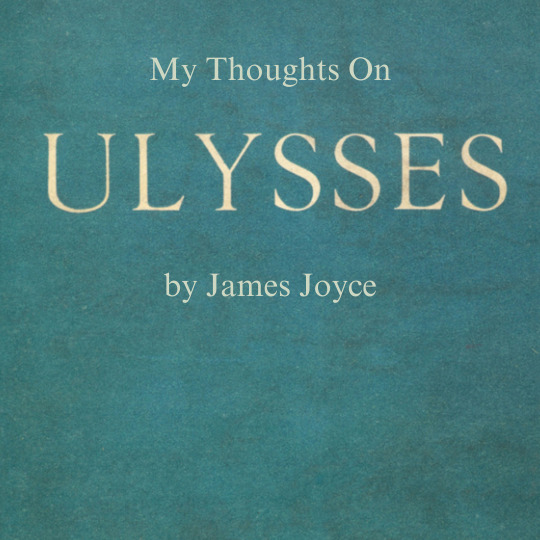




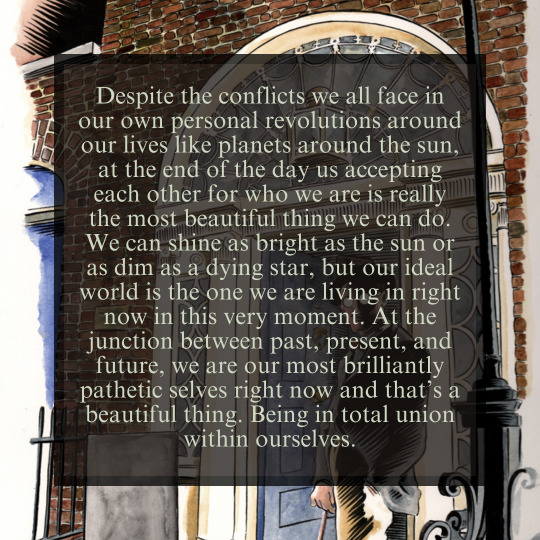
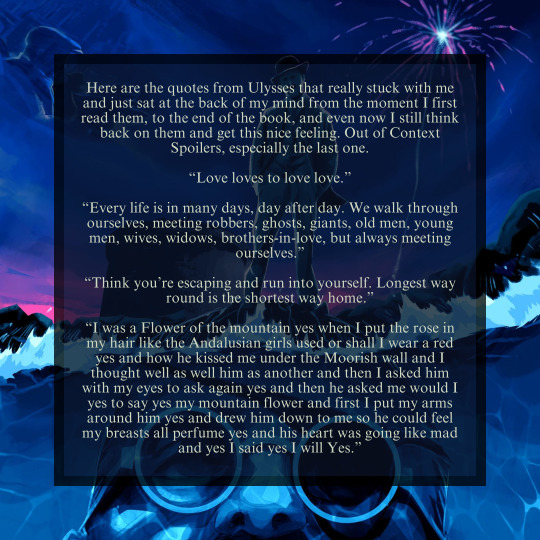
3 notes
·
View notes
Text
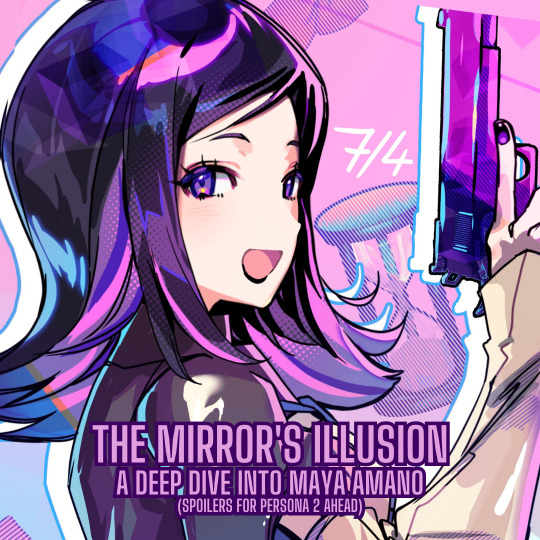


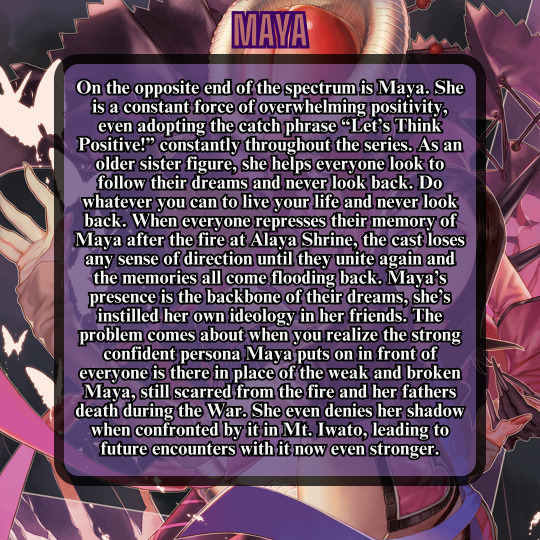
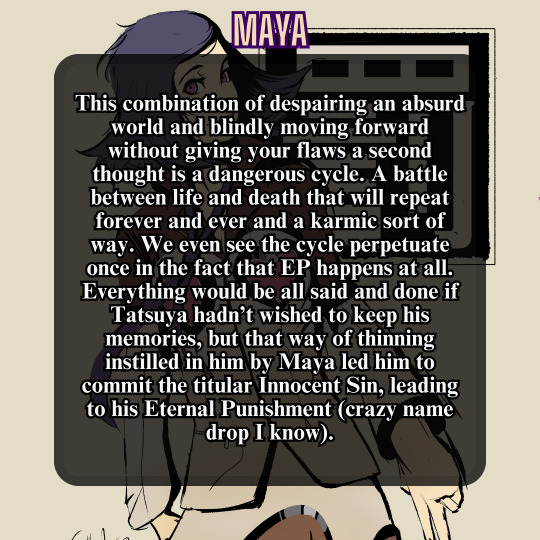

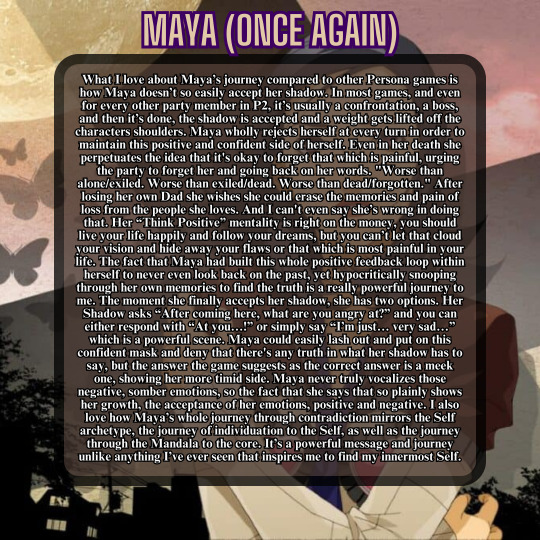
21 notes
·
View notes
Text

You understand fate, yet you still fight against it with all of your will... If more people were like you, then perhaps the Fall could have been prevented...
1K notes
·
View notes

